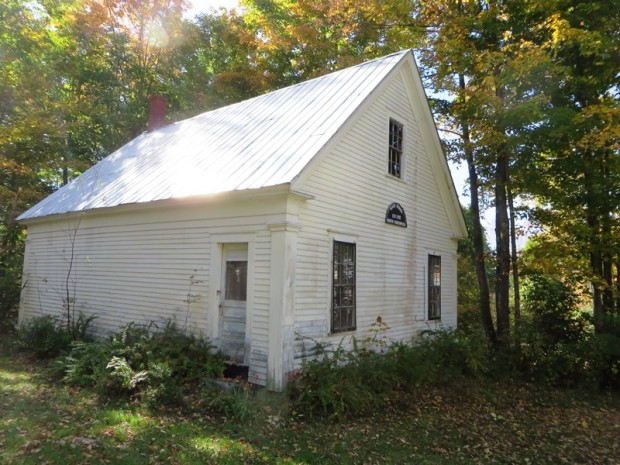

From this spur, a trestle was built that carried coal in dump carts to the Pondicherry Mill. In 1898, the neighboring town of Harrison wanted to be joined to the railroad and the RR owners obliged. Standing where I was on the bridge, I could see the stones related to the mill and dam. It was one of the most extensive manufacturing plants in Maine at that time and employed 50 operators. The Pondicherry Mill was built in 1865 to manufacture woolen goods.

In 1840, this was the site of the Walker Saw Mill and Grist Mill. By 1825, James Flint and Aaron Littlefield built a sawmill, which they operated for 15 years. A water-powered carding mill equipped to prepare wool for spinning, thus replacing the tedious hand work of disentangling, cleaning and intermixing the fibers was in operation in this area at the time. In 1822, this area of town wasn’t part of the main village–that was confined to Main Hill. I should note that this is power site #4. Yup, I’ve skipped the first three for now. Instead, I followed the stone steps down, walked beside the brook as it ran below the deep bank by Stevens Brook Elementary School and came up behind a few old buildings, back on Depot.Īnd then I stood on the bridge overlooking Food City. I should have taken a photo of the old Memorial School because that was the sight of the train depot (Depot Street) for the Bridgton and Saco River Railroad that was built in 1883–a narrow gauge operating from Hiram, but didn’t think of it at the time. The backside of the deeply-lobed leaves are silvery gray in old age and silvery white during their prime. It never occurred to me that they grew here, but makes perfect sense. I was backtracking, and again didn’t get far because of water flowing over the trail, but along the way I made a discovery. Those beautiful trees that lean over the brook–silver maples ( Acer saccharinum). By this point, Willet Brook has joined forces with Stevens, thus increasing the power of the water. Instead, I slipped onto the trail at Depot Street, beside the Bridgton Community Center. I didn’t begin at Pondicherry Park either–for the boardwalk was under water. Of course, to do this properly, I should begin at Highland Lake, the source of the brook, but I’m not a proper-sort-of gal and you’ll have to bear with me. So I guess, really, what follows is like the confluence of the Stevens and Willet Brooks–two streams that meet to form one.īridgton was once a thriving mill town and Stevens Brook its source of power. I also gleaned info from the Bridgton Historical Society several years ago, when Sue couldn’t lead the walk and asked me to fill in. And many of the words that follow are probably hers. Though she wasn’t with me today, I could hear Sue as I mosied along examining the old mill sites of the Stevens Brook Trail in Bridgton.

Sue has led numerous walks along the very trail I followed today and I’ve often been in her presence–usually with notebook in hand so I could jot information down and gain a better understanding of this place. I must begin with a thank you to fiber artist, historian and friend, Sue Black.


 0 kommentar(er)
0 kommentar(er)
